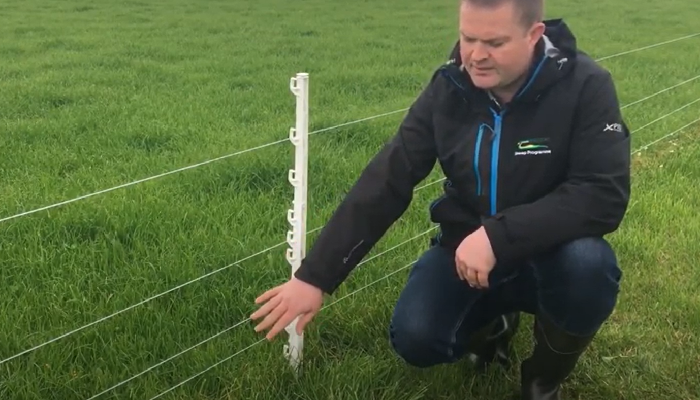27 April 2021
Advantages of rotational grazing systems for Sheep

Set stocking or continuous grazing systems are commonly operated on Irish sheep farms: sheep graze the same grassland area throughout the grazing season. Rotational grazing systems offer greater flexibility in grassland management, as Philip Creighton, Teagasc Grassland Researcher, Athenry outlines
Rotational grazing systems offer greater flexibility in grassland management by providing increased control over sward structure, grazing severity, regrowth periods and overall pasture supply.
This involves dividing the grassland area into a number of paddocks, which are then grazed, fertilised and rested in turn and can allow greater levels of herbage utilisation be achieved.
Athenry’s 5 paddock system
On the research demonstration farm in Athenry a simple 5 paddock rotational grazing system is used which can also be split temporarily as needed to give up to 10 grazing divisions per group. Average residency time in paddocks in April, May and June is 5 days (2.5 days per half paddock). This form of grassland management maximizes grass growth and utilisation while maintaining animal performance as quality is more easily controlled.
A general recommendation
A general recommendation with regard to paddock size taking an example of a farm with a flock of 100 ewes stocked at 10 ewes/ha would be a minimum of 5 paddocks of 2ha (5 ac) each per grazing group, which could be further divided using temporary fencing as required. Data coming from Pasturebase Ireland shows a strong relationship between the number of paddocks per farm and the total number of grazings achieved per farm. It has identified that the advantage of creating one new paddock on a farm will give five extra grazings from the farm annually.
Creating one new paddock on a farm will give five extra grazings from the farm annually
A key finding from the grazing performance of drystock farms recording on PBI showed the greater the number of grazings achieved, the higher the grass DM production. Again making greater use of temporary fencing in conjunction with strategically placed permanent fences can allow paddock number and size to be more accurately allocated based on group size and grass cover available.
Philip discusses setting up temporary grazing divisions in the Temporary fencing for sheep video below.
Further information on Grassland Management for Sheep can be found here
